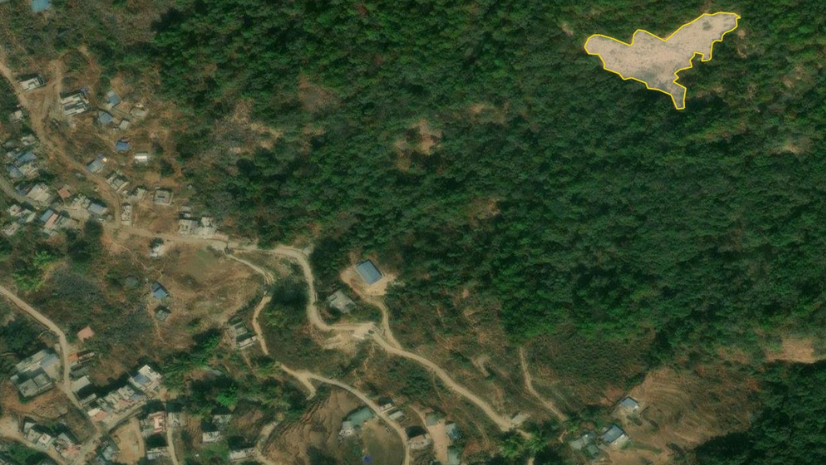In an era where rapid decision-making is mission critical, how can defense teams gain the upper hand with real-time insights? Last month, Esri showcased its leadership in geospatial technology at the Association of the United States Army (AUSA) exhibition. In case you missed it, Esri’s powerful suite of tools demonstrated how data visualization, analytics, and edge computing can transform national security operations.
Transforming Defense with Cutting-Edge Capabilities
ArcGIS AllSource: Empowering Maritime Surveillance

ArcGIS AllSource delivers powerful visualization tools for maritime surveillance, enabling analysts to quickly detect movement patterns and identify ships of interest. Designed to support defense and intelligence teams, this comprehensive platform enhances real-time situational awareness, empowering effective responses to potential maritime threats.
Key Features and Capabilities:
- Automated Pattern Detection: Users can sift through large ship-tracking datasets to detect and flag critical patterns such as prolonged stationary periods (dwelling), unexpected rendezvous between vessels, and locations where signal tracks are lost or reappear. These indicators can be critical in identifying suspicious or covert activities.
- Enhanced Data Integration: ArcGIS AllSource supports the fusion of multiple data sources, including satellite imagery, Automatic Identification System (AIS) data, and radar feeds, providing a more complete operational picture. This integration allows analysts to cross-reference different data types for comprehensive maritime analysis.
- Custom Alerts and Monitoring: Analysts can set up custom alerts to monitor specific areas or track vessels. They will receive notifications when activity deviates from expected patterns. This proactive feature helps detect potential security threats before they escalate.
Operational Advantages: With ArcGIS AllSource, maritime surveillance teams can move beyond basic tracking to conduct deeper analysis and identify trends indicative of illicit behavior, such as smuggling or unauthorized vessel-to-vessel transfers. The platform’s intuitive interface allows users to visualize complex data easily, making it accessible to a wide range of users, from novice operators to experienced analysts.
ArcGIS AllSource has been effectively used to monitor areas of strategic importance, ensuring that intelligence teams can respond to suspicious activity promptly. Whether tracking unauthorized fishing vessels or monitoring shipping lanes for security threats, the platform provides the tools for decisive action.
ArcGIS Knowledge: Connecting People and Places

Geographic link charts in ArcGIS Knowledge empower analysts to visualize and interpret complex connections between individuals, organizations, and locations within a network of interest, all within a geographic context. This tool goes beyond traditional mapping by allowing users to represent relational data spatially, helping uncover hidden patterns, relationships, and potential points of concern that might be overlooked.
Key Features and Capabilities:
- Identify Key Players: Pinpoint individuals or entities that act as significant nodes within a network, aiding in strategic assessments and decision-making.
- Map Locations of Interest: This feature links people and activities to specific locations, revealing hubs of activity that may require further investigation.
- Streamline Workflows: Integrate link charts into broader analytical processes, facilitating collaboration and sharing findings among teams or with leadership.
Operational Advantages: The visual nature of link charts makes it easier for teams to interpret large datasets quickly, leading to faster insights and more effective operational planning. Analysts can highlight connections, trace the flow of information or resources, and simulate potential scenarios to forecast outcomes.
Revolutionizing Personnel Management with ArcGIS Dashboards

Transforming static personnel rosters and traditional data lists into dynamic, interactive visualizations with ArcGIS Dashboards provides an intuitive overview of an organization’s personnel disposition. This tool empowers defense organizations to manage their most valuable asset—people—more efficiently and effectively. It offers real-time insights into where service members are assigned, their current status, and their mission readiness levels.
Key Features and Capabilities:
- Instant Data Visualization: With ArcGIS Dashboards, commanders and analysts can see how personnel are distributed across various locations, missions, or units. This capability enables them to make informed resource allocation, staffing, and deployment decisions.
- Detailed MOS Analysis: The tool allows users to analyze Military Occupational Specialty (MOS) distributions, revealing gaps or strengths within the force structure. This insight is vital for planning training programs, addressing skill shortages, and ensuring balanced unit capabilities.
- Customizable Filters: Users can apply filters to display data by rank, role, location, or other critical categories, allowing for tailored insights based on specific operational needs. This flexibility ensures commanders can focus on the information most relevant to their current priorities.
Enhanced Decision-Making and Operational Readiness: ArcGIS Dashboards provide immediate access to real-time data, eliminating the delays associated with outdated, manual record-keeping. This capability improves decision-making by ensuring leaders can evaluate personnel readiness immediately, react to changes swiftly, and plan operations with a clear understanding of available human resources. The interactive nature of dashboards also supports collaborative analysis, as multiple team members can access and interpret data simultaneously, facilitating coordinated efforts and faster response times.
Strategic Partnerships Amplify Esri’s Impact
Delivering ArcGIS to the Edge with Oracle

Oracle’s Roving Edge device (RED) and Roving Edge Ultra device provide the robust, high-performance infrastructure for deploying ArcGIS in the most challenging environments. These devices are built to handle the demanding conditions faced by defense and field operations, from extreme temperatures to limited connectivity. By deploying ArcGIS on Oracle’s edge solutions, teams gain the advantage of real-time geospatial data processing and visualization directly in the field without relying on a constant connection to central command systems.
Critical Advantages of Oracle’s RED and Ultra Integration:
- Low-Latency Data Processing: Oracle’s infrastructure ensures that data can be processed and analyzed rapidly, giving field operators access to actionable intelligence without delays. This is essential in mission-critical situations where timely information can distinguish between success and failure.
- High Availability and Reliability: Oracle’s Roving Edge devices’ rugged design guarantees consistent performance, even in harsh or isolated environments. This reliability is essential for defense operations, where consistent access to data and tools can impact mission outcomes.
- Enhanced Security: Oracle’s edge devices come with built-in security features that align with the stringent requirements of defense operations, ensuring that data remains protected during processing and transmission.
Operational Efficiency and Independence: Field teams gain operational independence by deploying ArcGIS directly at the edge. Even when connectivity to a central data center is limited or nonexistent, operators can still collect, analyze, and visualize geospatial data to make informed decisions. This edge capability enables on-site personnel to adapt rapidly to changing conditions, enhancing situational awareness and response agility.
MLOps Integration with Striveworks

Striveworks’ machine learning operations (MLOps) platform elevates ArcGIS by integrating machine learning (ML) into geospatial workflows. This enables military and defense teams to harness advanced analytics seamlessly within their existing context.
Core Benefits:
- Real-Time Data Processing: Apply ML algorithms to large datasets to interpret satellite imagery and sensor data rapidly, enhancing situational awareness and readiness.
- Adaptive Strategy Development: Analyze data on the fly and adapt strategies proactively with predictive insights.
- User-Friendly Model Deployment: Simplified model deployment allows nontechnical users to access powerful insights without specialized expertise.
Striveworks’ integration fosters collaboration by embedding ML tools within ArcGIS, enabling data scientists, intelligence officers, and field analysts to share findings and adjust analyses in real time , supporting coordinated mission planning.
Looking Forward: A New Standard for Defense Technology
The AUSA 2024 exhibition was a testament to Esri’s leadership in geospatial innovation. By partnering with Oracle and Striveworks, Esri showcased how collaboration can push the boundaries of technology, setting a new standard for robust, intelligent, and reliable defense solutions. This is just the beginning of what Esri can achieve in partnership with industry leaders, and we are excited to continue developing advancements that empower those on the front lines with the insights they need.
Join Us: Visit esri.com to learn how Esri’s technology can revolutionize your defense operations. Stay tuned for future events and opportunities to see Esri’s innovative solutions.

